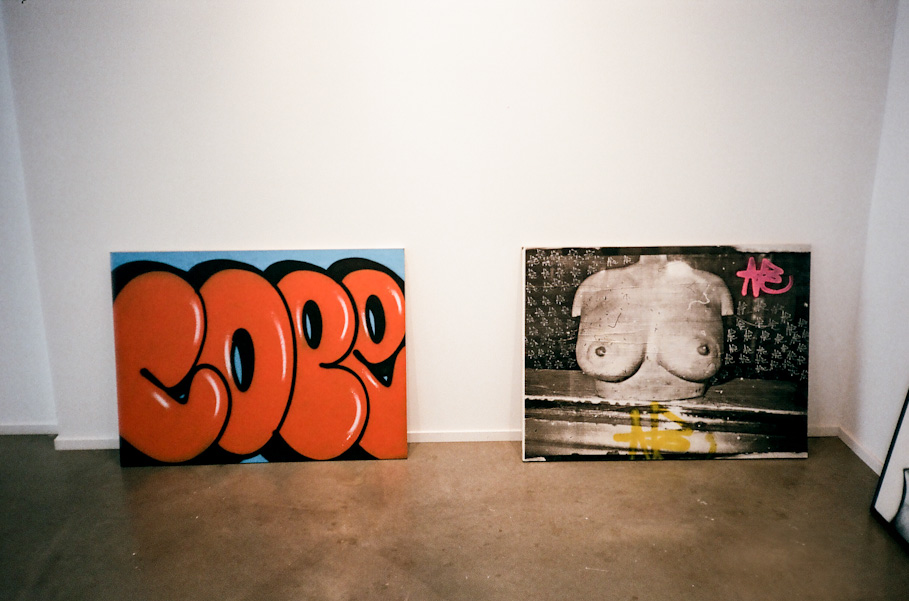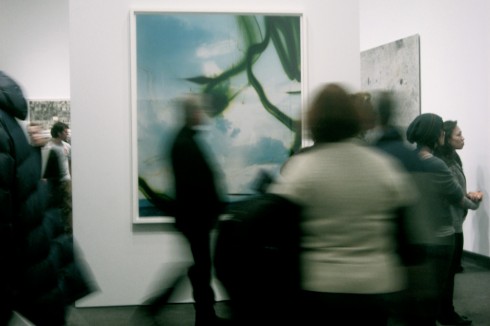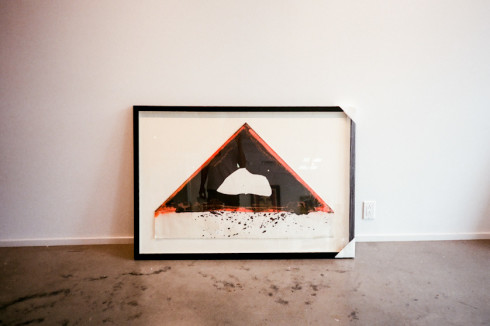
Get SmArt
The Value of Investing in Art
Growing up, my definitive answer to every “What do you want to be when you grow up?” was “an artist.” Now that I have arguably grown up, my answer has shifted slightly. My goals now include financial stability and being surrounded by people and things that I value. I have come to terms with the fact that I may not realize my childhood fantasies but this does not mean I cannot responsibly surround myself with the work of those who did.
To the untrained eye the art market might seem like a risky place but with the right approach, investing in art can have impressive returns. In 2003, the sales at Christie’s Hong Kong totaled $98 million. Last year, they were $836 million. The reality is that the numbers of investors are currently growing faster than ever before. Now is the time to begin capitalizing on the potential of contemporary art.
Investing in art has inherently unique benefits but also provides investors with several benefits in direct response to the downsides of traditional investing. I offer you, keen art lover, my humble opinion as to why investing in art is a great idea, as well as a quick startup guide to get you on your way.
BENEFITS
Investing in art, especially emerging art, is a form of angel investing. It takes passion and foresight. Angel investors are those who contribute to a cause they believe in to encourage momentum and benefits for both the artist as well as the investor. The active and emotional process of contributing to this sort of creation is actually quite pleasurable. It offers a human element to what can alternatively be dry, money-oriented business.
Art is also available for collectors of every wealth bracket. From prints and giclées to historical masterpieces, every collection must begin somewhere. Keep in mind that most prints and giclées do not offer much opportunity for resale but are a great way to begin living with art and figuring out what aesthetic you like to be surrounded by.
There are definite tax benefits to supporting art, especially locally. If donating is the route you decide to take, make sure that the recipient is eligible to issue tax receipts. Make sure to research your province’s regulations with your financial advisor before you start collecting. For example the Government of Quebec offers a tax deduction of the amortization of 33.33% of the cost of acquisition of a work of art while the Government of Canada can offer a tax deduction of the amortization of 20%. The numbers can be quite attractive. Some banks even have accounts tailored to art collectors, such as HSBC’s Design & Art program or CitiBank’s Art Advisory financing. The diversification of your investment portfolio also lowers your risks. Don’t put all your eggs in one moneybasket.
In a world as saturated with images as todays, getting your hands on something original is becoming more and more rare and valuable. Not only will an art collection help build the artistic community of those you support, it will also enhance your personal cultural value for yourself and those left to deal with (it’s inevitable!) your estate.

INFORM YOURSELF
First of all, start surrounding yourself in art now. If you’re reading this, you are likely already exposing yourself to art but either way.. don’t stop. This is the best way to develop an eye and make smart decisions that both your eye and your wallet will appreciate.
Speak to professionals. Next time you are at an art show, talk to the gallerist, they are happy to shed some insight to beginners and are a great asset to help shape your collection. Browsing websites like artnet.com and artprice.com will offer information on trends. There are also various activities in local cultural centres aimed at helping early collectors, such as SeminArts, an initiative headed by the Musée d’Art Contemporain in Montreal. Books such as Ernst Hans Gombrich’s The Story of Art, (a bestseller for over 4 decades) are great resources. Tried and true.
SPECIFY
After some time, pick an artist or an era or a movement that appeals to you and become an expert. Honestly, read books, go to shows, talk to experts. Once you have specified what you want your collection to look like, find someone in the art world that can stay with you for years. Staying loyal to a few specialists throughout your collecting will create long-lasting relationships. This is great for tailoring your collection as well as creating opportunities for reselling back to vendors.
MINIMIZE RISK
Since we are talking about your money, playing it safe is not such a bad thing. At least at first, follow trends. Go where the money is. Trends change, but are powerful assets to consider. Once you are a bit more established in your art-world network, you can ditch the trends and start setting them. Don’t get ahead of yourself, this is a great point to reach but it takes time, connections, and a good eye.
To get specific for a minute, there are certain artists that remain smart investments after having achieved a level of reputation that will not change anytime soon. For my fellow Montrealers, some Canadian masters that present amazing opportunities for reselling are Rita Letendre, Serge Lemoyne, Jean Paul Riopelle, Paul Émile Borduas, etc. If you are lucky enough to be in the wealth bracket able to buy these sorts of works, saying they’re a safe bet would be an understatement. Something to keep in mind for those who aren’t quite there yet: if a gallery has pieces by established “safe bets”, their staff likely have some insight as to what emerging artists show the most potential. Personally, my favourite and most promising Canadian artists on the rise are Jean “TurfOne” Labourdette, Other, Osvaldo Ramirez Castillo, and Jon Todd to name a very small few.

START NOW
It’s never too late and it is definitely never too early to start collecting art. You will be helping young creatives as well as your future self. Start small and get smart, 86 the risk. Now go contribute to the art industry in a way that won’t leave you starving.
Growing up, my definitive answer to every “What do you want to be when you grow up?” was “an artist.” Now that I have arguably grown up, my answer has shifted slightly. My goals now include financial stability and being surrounded by people and things that I value. I have come to terms with the fact that I may not realize my childhood fantasies but this does not mean I cannot responsibly surround myself with the work of those who did.
To the untrained eye the art market might seem like a risky place but with the right approach, investing in art can have impressive returns. In 2003, the sales at Christie’s Hong Kong totaled $98 million. Last year, they were $836 million. The reality is that the numbers of investors are currently growing faster than ever before. Now is the time to begin capitalizing on the potential of contemporary art.
Investing in art has inherently unique benefits but also provides investors with several benefits in direct response to the downsides of traditional investing. I offer you, keen art lover, my humble opinion as to why investing in art is a great idea, as well as a quick startup guide to get you on your way.
BENEFITS
Investing in art, especially emerging art, is a form of angel investing. It takes passion and foresight. Angel investors are those who contribute to a cause they believe in to encourage momentum and benefits for both the artist as well as the investor. The active and emotional process of contributing to this sort of creation is actually quite pleasurable. It offers a human element to what can alternatively be dry, money-oriented business.
Art is also available for collectors of every wealth bracket. From prints and giclées to historical masterpieces, every collection must begin somewhere. Keep in mind that most prints and giclées do not offer much opportunity for resale but are a great way to begin living with art and figuring out what aesthetic you like to be surrounded by.
There are definite tax benefits to supporting art, especially locally. If donating is the route you decide to take, make sure that the recipient is eligible to issue tax receipts. Make sure to research your province’s regulations with your financial advisor before you start collecting. For example the Government of Quebec offers a tax deduction of the amortization of 33.33% of the cost of acquisition of a work of art while the Government of Canada can offer a tax deduction of the amortization of 20%. The numbers can be quite attractive. Some banks even have accounts tailored to art collectors, such as HSBC’s Design & Art program or CitiBank’s Art Advisory financing. The diversification of your investment portfolio also lowers your risks. Don’t put all your eggs in one moneybasket.
In a world as saturated with images as todays, getting your hands on something original is becoming more and more rare and valuable. Not only will an art collection help build the artistic community of those you support, it will also enhance your personal cultural value for yourself and those left to deal with (it’s inevitable!) your estate.

INFORM YOURSELF
First of all, start surrounding yourself in art now. If you’re reading this, you are likely already exposing yourself to art but either way.. don’t stop. This is the best way to develop an eye and make smart decisions that both your eye and your wallet will appreciate.
Speak to professionals. Next time you are at an art show, talk to the gallerist, they are happy to shed some insight to beginners and are a great asset to help shape your collection. Browsing websites like artnet.com and artprice.com will offer information on trends. There are also various activities in local cultural centres aimed at helping early collectors, such as SeminArts, an initiative headed by the Musée d’Art Contemporain in Montreal. Books such as Ernst Hans Gombrich’s The Story of Art, (a bestseller for over 4 decades) are great resources. Tried and true.
SPECIFY
After some time, pick an artist or an era or a movement that appeals to you and become an expert. Honestly, read books, go to shows, talk to experts. Once you have specified what you want your collection to look like, find someone in the art world that can stay with you for years. Staying loyal to a few specialists throughout your collecting will create long-lasting relationships. This is great for tailoring your collection as well as creating opportunities for reselling back to vendors.
MINIMIZE RISK
Since we are talking about your money, playing it safe is not such a bad thing. At least at first, follow trends. Go where the money is. Trends change, but are powerful assets to consider. Once you are a bit more established in your art-world network, you can ditch the trends and start setting them. Don’t get ahead of yourself, this is a great point to reach but it takes time, connections, and a good eye.
To get specific for a minute, there are certain artists that remain smart investments after having achieved a level of reputation that will not change anytime soon. For my fellow Montrealers, some Canadian masters that present amazing opportunities for reselling are Rita Letendre, Serge Lemoyne, Jean Paul Riopelle, Paul Émile Borduas, etc. If you are lucky enough to be in the wealth bracket able to buy these sorts of works, saying they’re a safe bet would be an understatement. Something to keep in mind for those who aren’t quite there yet: if a gallery has pieces by established “safe bets”, their staff likely have some insight as to what emerging artists show the most potential. Personally, my favourite and most promising Canadian artists on the rise are Jean “TurfOne” Labourdette, Other, Osvaldo Ramirez Castillo, and Jon Todd to name a very small few.

START NOW
It’s never too late and it is definitely never too early to start collecting art. You will be helping young creatives as well as your future self. Start small and get smart, 86 the risk. Now go contribute to the art industry in a way that won’t leave you starving.
